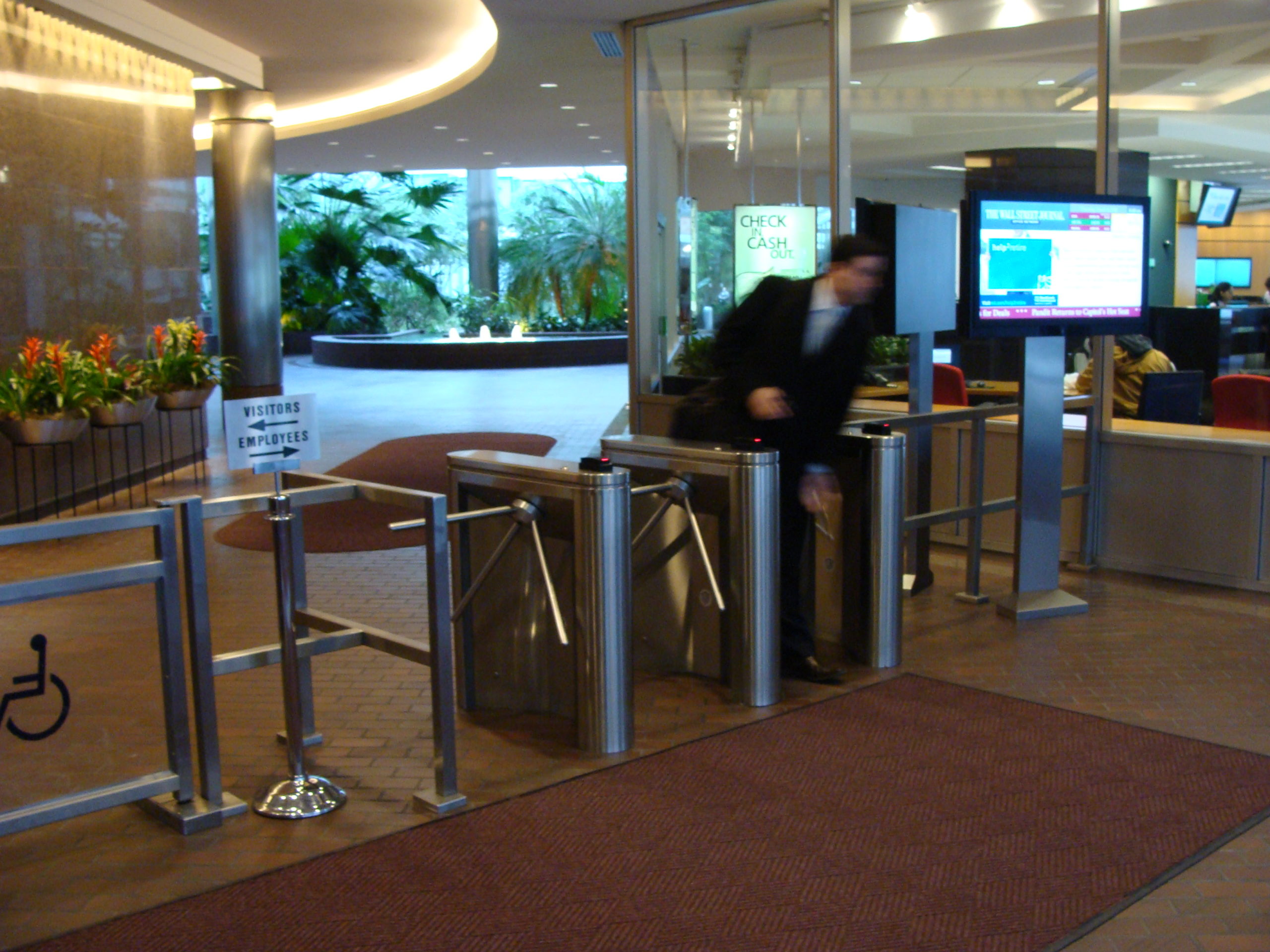
This article applies to any purchase of waist-high mechanical turnstile, but it is oriented toward the rental requirements.
Waist-high turnstiles serve both as a psychological and practical entry delineation. Mentally, people who pass through a turnstile, feel differently than those who simply show a ticket. There is something tactile having the three arms rotate, putting you on the other side. Facilities have learned to use this to their advantage, by positioning them in such a way that the good feeling of passing through results in increased spend for both food and beverage, as well as souvenirs.
It does come with a downside, as a bank of turnstiles has a well-defined through-put, that is considerably lower than free entry.
The practical reason for turnstiles is twofold. One is to make sure that all entry is paid for by matching rotations to tickets collected. Although most entry ticket checking is now done through auto barcode or GR readings, it still indicates the number of individuals who enter and leave.
The best example would be a nightclub where the capacity is limited by the fire marshal, and they need to demonstrate the controls necessary to maintain the capacity to the maximum. Turnstile counters can be configured to either count in or count-out. Other options are also possible.
And increasingly, it allows security to observe individuals for contraband without seeming to be threatening.
This is most acute for those facilities that only occasionally rent turnstiles for special events. And have limited experience in calculating the requirements. So we discuss below the checklist to assist in matching the appropriate requirements.
This is vital because there are too few, there will be bottlenecks and patrons will form long lines for entry. And with entry excitement highest just before entry, this could lead to difficult crowd management situations.
On the other hand, if an organizer orders too many turnstiles, he will also need to hire extra employees to man them. So not only is he spending unnecessary funds on actual turnstiles, he also has unnecessary labor costs.
In every event, there are designated entry and or exit locations. In addition to total numbers, care must also be applied to match the number of turnstiles at each location. If you are lucky enough not to need exit turnstiles, the job is simplified.
In addition, the calculation must be projected to the total time entry is allowed, and to any surge events. For example tailgating at football games often leads to last-minute entry bottlenecks, whereas at state fairs, the time of day and events occurring allow easier projections for the gates.
Each rotation takes a fixed amount of time. So keeping the patron line moving continuously is paramount to good gate control as well as maximum throughput. That means having a staging ground prior to the actual entry is vital. This does not have to be complex and should reflect the acts and the characteristics of the patrons. Most often we see the belted posts in the next inline configuration. And since most facilities, these days have excess inventory, the steel or plastic barricades also used in a zig-zag configuration.
Having a bank of turnstiles can also reduce the number of security personnel needed. It also goes to reason that if you also have walk-through metal detectors, the same basic requirements will be needed.
Since both metal detectors and turnstiles slow down the entry, knowing the surge times and counts is critical because at maximum efficiency, a turnstile only allows 25 people per minute, and there will always be those who stop mid-stream or have children who cause delays.
As an example let’s assume an event has gates open for 90 minutes., and that 20,000 patrons are expected.
So 20,000 people divided by 25 means 800 minutes at maximum efficiency.
Divide the 800 minutes to enter by the 90 minute entrance time, you would need, again at maximum efficiency, 8.8 turnstiles.
We suggest at least a 25% margin, so you would need at least 11 units.
Now we know that there are surges, and that occasional surges can be tolerated both by employees and patrons. But this will give you a ballpark estimate in calculating needs.
When renting turnstiles, there is a wide variety of units available. Nearly all rentable stock in North American tends to be refurbished units and configured with a side rail and base plate.
They can be simple units without counters, one-way counters, two-way counter, resettable counter, non-resettable counters, from different manufacturers, and with and without wheels. So when renting, make sure you are aware of what can and will be actually delivered. There is a shortage of rentable stock, so those who do the renting will nearly always have mixed inventory. That means those who rent, frequently need to be flexible and adapt to what is available.
Now, an area often overlooked, is the handicap or simple entry. This could be a wheelchair, a vendor with a dolly, or even a baby carriage. It must not be part of the main entrance but off to the side and easily identified before patrons line up for entry. You do not want upset patrons with people stepping in front of others or disrupting the flow by darting to the side. Good early signage is useful.
As stated above, very similar situations occur when using both walk-through metal detectors and hand wands. These situations tend to be a bit more complex and even more of a throughput barrier, but if designed correctly will reassure patrons about the facility’s security.
Click here for a checklist you can use with the normal qualification questions.
